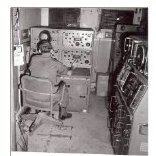Building a new house in Isaan
-
Recently Browsing 0 members
- No registered users viewing this page.
-
Topics
-
Popular Contributors
-
Latest posts...
-
22
Pickup Truck Ploughs Through Songkran Revellers, Injuring Nearly 20, Driver Beaten by Mob
And again a bunch of BS! If you choose to drive or walk trough areas designated for water play, you might not have the chance to avoid it, but if you take the way around it, you will surely get the respect out of Thai people in Phuket as well. -
28
El Salvador will not return Kilmar Ábrego García deported from the US in error
I think his fellow gang members will protect him. That he wasn't skinned alive for having anauthorized gang tatts tells serious observers all they need to know about this bad hombre. Of course msm consumers will believe he is a poor innocent lamb and ignore the reality of unauthorized gang tatts so they can do more irrational hating on Trump. IF he ever gets returned Ill happily chip in to buy him and his crew a clubhouse next door to the judge. Sweet justice. -
15
Arson Attack at Pennsylvania Governor’s Home, Suspect in Custody Possible Terrorism Charges
'Registered socialist,' BLM supporter Cody Balmer charged with arson of PA governor's mansion https://thepostmillennial.com/registered-socialist-blm-supporter-cody-balmer-charged-with-arson-of-pa-governors-mansion -
0
Is it still fun?
In past years, the water-throwing didn't really begin until noon. Anyone who needed to get business done without getting wet was able to do so just by leaving earlier. No problem. Those who want to play come out later and spend the rest of the day and evening happily throwing water, powder, and sometimes beer cans at other happy revelers! All afternoon and evening! But... not before noon. Well, not any longer. I tried for a supermarket and drug store run at 10am. The Moat roads were at a standstill, with happy revelers throwing water in every direction. At 10am. I made it to the shops without being 'too' wet (at 10am) but by 10:30's ride home was as if I was surfing Bondi Beach. Water, water everywhere, and no place to hide. At 10:30 in the morning. I enjoy Songkran... when I want to play. Not when I do not. We don't get a choice any longer. -
20
-
22
Pickup Truck Ploughs Through Songkran Revellers, Injuring Nearly 20, Driver Beaten by Mob
Right! Sure one needs to avoid designated areas. That was written between the lines 😉 And of course, we will always have the ones that just refuse to see, listen or understand. That thing is not Thai specific, as you will find it in any country. However, in my opinion most people are sensible and show respect to the ones who wish so.
-
-
Popular in The Pub
-
.png.3b3332cc2256ad0edbc2fe9404feeef0.png.8488ab72b8bb2e508209bfe3211b6e08.png)











.thumb.jpg.b54783ad387f65d779e04f535fcfeee9.jpg)
Recommended Posts